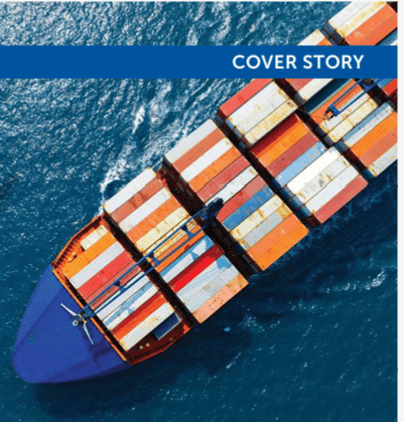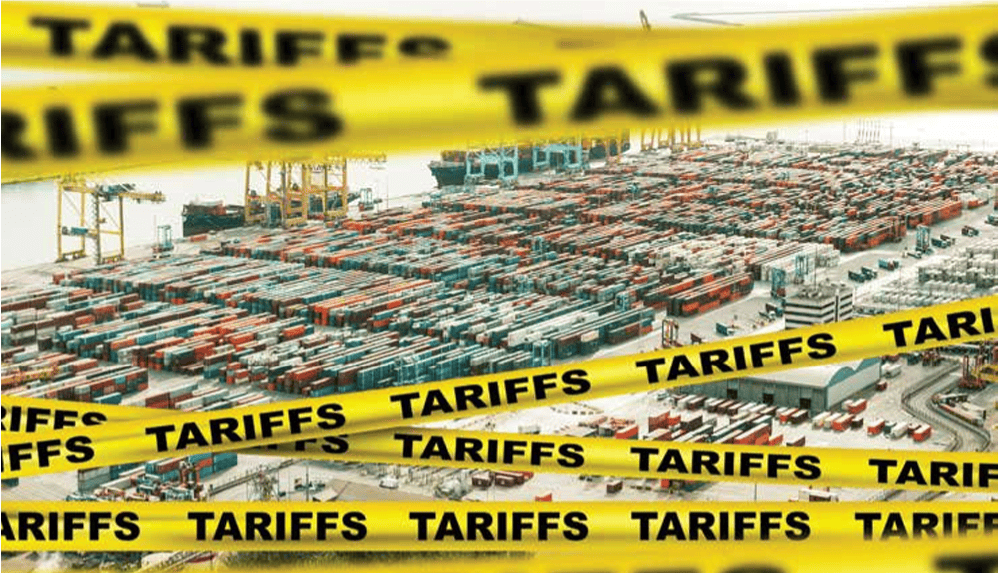Four global logistics leaders offer regional insight on global cold chain growth and development.
By Gina Veazey
If you want to know how the global cold storage industry is doing, you should ask leaders in the global cold storage industry. So, that’s what we did.
We wanted to know about some of the changes we’ve seen in the industry over the last decade, specifically a pattern we’ve noticed with new entrants to the industry. Why are they drawn to the cold storage industry? And why are we seeing new entrants in large numbers all over the world?
We wanted to know what our experts thought about the health of this industry, given the highly publicized risk of a global recession later this year. Do our experts see the cold chain industry as resilient? How painful will the next few years be?
We also asked about big-ticket items, like energy, and about big initiatives, like the environment. We asked about customers, and we asked about consumers.
Our experts, all logistics leaders in a different region of the world, participated in a popular panel with a similar theme at GCCA’s European Cold Chain Conference (ECCC).
Minimal Barrier to Entry and Growth
Owing to an extended period of low interest rates and a growing middle class, the global cold chain industry has been ripe for entry by newcomers and investors.
In addition to easing a barrier to market entry, low interest rates have simultaneously driven the value of in-place assets, making smaller companies targets for acquisition, observes Daniel Kaplan, Director of Vertical Cold Storage & Rack Builders Inc. in the United States.
“People will continue eating, even during recessions,” says Francisco Moura, CEO of IceStar, part of Agro Merchants Group in Chile. “Double-digit growth around the globe and the industry’s resilience have made cold chain logistics very attractive to different types of investors.” In the last 15 years, he says these have included big multinational companies, private equity funds, real estate and infrastructure funds and others.
In the Asia Pacific region alone, the cold chain industry is expected to grow substantially over the next five years, consistent with compound annual growth rate (CAGR) of 12% to 14% from 2023 to 2028, says Graham Harvey, Global Vice President, Quality, Safety and Sustainability at NewCold in Australia.
The Middle Class
A rapid rise in Asia Pacific disposable household income is driving dietary shifts toward premium proteins. Cold chain infrastructure requirements are also changing. In China, one of the world’s largest consumer markets, Harvey observes a rapidly increasing need for both chilled and frozen facilities to warehouse and transport food.
Kaplan and Moura say it’s not just the growing middle class in the Asia Pacific region, but all over the world, that is driving demand for refrigerated and frozen foods, particularly protein products.
The future is bright, says Moura, for cold storage, “as long as poor and middle-class countries get richer and begin eating frozen and refrigerated foods,” says Moura.
The Outlier
In contrast to other regions, in Southern Africa, 3PLs are focused on staying relevant as consumers struggle, says Chris Creed, Managing Director of Vector Logistics in South Africa. As in other regions, he says operators in Southern Africa are encountering a period of consolidation.
Creed says disposable income is under pressure, and inflation and interest rates are trending upward, resulting in vastly altered consumer purchasing patterns. Entire supply chains are experiencing unprecedented cost pressure. Meanwhile, there is a “massive focus on ‘just in time’ stock availability” and “expectations of increased service and responsiveness to queries.
Taming Energy Costs, Tackling Sustainability
In Latin America, which sources most of its energy from water, cold chain operators enjoy a more favorable energy market than counterparts in Europe or in the United States, Moura notes. With a record rainfall in Brazil, he says energy prices have even declined.
Cold chain operators who aren’t as lucky, including those in the Asia Pacific region, have encountered year-over-year increases in energy costs ranging from 30% to 60%, Harvey reports. “On top of this, the move to renewable energy sources can bring an imbalance of supply and demand, adding to the volatility,” he says.
For Kaplan, rising energy costs and high volatility in energy supply and demand prove that investments in energy efficiency are a sound strategy. “The playbook is unchanged: invest in long-term energy-efficient design, rather than take the low-bid design,” he advises.
In Southern Africa, Vector is putting that advice into action with an approach that tackles energy costs and addresses sustainability on multiple fronts.
“Our industry is heavily reliant on fossil fuels. It is both challenging and unsustainable given the rising costs of fuel, supply constraints and impact of carbon emissions,” Creed says. “The downstream effects impact our ability to remain competitive, keep our costs at a minimum as well as meet our sustainability goals.
“Additionally, we know the macro environment in Southern Africa around economic instability, and progressive load shedding is not going to change overnight,” Creed continues.
With a desire to become more self-sufficient, Vector has made significant strides to improve the efficiency of its operations, including reducing its greenhouse gas emissions. The company has moved toward a renewable energy business and has minimized negative environmental impact by ensuring a high standard of environmental management. These include:
- Solar panels at major warehouses and on refrigeration units of some of its fleet trucks allow the company to run solar and electrical.
- In July, the company will implement solar on its 15.5-meter (about 50.8-foot) semitrailers running for five days over a very long distance with a high sunlight percentage.
- Also in July, the company will begin converting waste to biofuel and will lead a nationwide conversion to LED lights and lithium-ion batteries.
- Vector is also reviewing the viability of kinetic energy to operate some components of its trucks.
“We believe any action, no matter how small, towards protecting the environment is a step in the right direction and moves us towards a more environmentally sustainable business and a better planet for all,” says Creed.
Serving Customers
Turning to long-term customer goals and needs and how those may impact logistics businesses, Kaplan and Moura both cited increased complexity in the warehouse.
“Customers will continue the move toward complexity in both SKU proliferation and patterns of business rules,” says Kaplan. “I don’t think it changes how we work, but it does require that we pay attention to expanded warehouse and warehouse management system (WMS) capabilities.”
Moura is more skeptical, noting that SKU proliferation “puts pressure on warehouse density,” and are in “need of higher service levels in the industry as a whole, which combined with cost inflation and greater competition can lead to lower margins.
We understand that efficiency and productivity are two subjects that will be more important in the coming years in order to have a sustainable business,” concludes Moura.
In Southern Africa, Creed says Vector customers face several unique challenges stemming from current economic conditions. This includes the cost of fuel and the increasing cost of distribution above inflation. This is made worse by an expansion of store footprints by major retailers, resulting in a need for more frequent deliveries. Finally, he says the increase in consumer demand for home delivery in a highly competitive market is another strain on Vector customers.
These challenges have led the company to take a hard look at its cost-to-serve model by channel group. “Simplification and insight-driven decision making through digital supply chain visibility has positioned us well to remain resilient and responsive to our customers’ ever-changing needs,” Creed says.
A Resilient Cold Chain
Although the logistics leaders agreed the cold chain industry will withstand current economic and geopolitical challenges, none of them sees the path to tomorrow unfolding in a straight line.
“I understand our industry will continue very strong, [although] smaller inventories are a quite forecastable outcome in the next months,” says Moura. “People will continue consuming frozen and refrigerated foods, even increasing consumption in the less developed countries.
“Climate change and geopolitical wars will benefit some regions like Latin America, which has high potential to increase food exports at very high growth rates,” Moura adds.
From the perspective of the Asia Pacific region, Harvey is least bullish on the future of the cold chain industry, saying, “Volatility in the cold chain will last for a long time, and it is unknown when, and if, supply and cost will return to pre-COVID levels. We are certainly in for a period of high inflation and cost pressures from a number of areas, including the obvious aspects of energy and labor, but supply chain disruptions are also increasing from areas like container availability, port congestion and pallet shortages as imbalances continue.”
However, Harvey concludes with a reassurance that, “The cold chain is an essential supply chain and there is no doubt it will survive the current pressures.”
Pointing to the silver lining, Kaplan notes that, “In my experience, 3PLs are a sector of the economy that tend to be mostly unaffected by recessions, with the possible exception that it eases recruitment and retention difficulties.”
Bright Spots
All over the world, a growing middle class continues to consume more protein-rich foods and higher-quality produce, improving the market for international trade, notes Kaplan in a sentiment echoed by others. “Unfortunately,” he says, “this bright spot is dimmed by growing protectionist tendencies around the world.”
From increased demand, Harvey sees hope for greater energy efficiency. “In the Asia Pacific region, increased demand for cold chain infrastructure and services, combined with an increasing focus on energy efficiency and automation, can lead to investment in highly efficient and cost-effective facilities,” he comments.
Creed, from his vantage point in Southern Africa, sees bright spots in investments into developing countries in Africa, advancements in technology appropriate for the frozen industry, artificial intelligence and machine learning applications to streamline business processes, and decarbonization. He remains concerned, however, over energy issues related to fuel and power supply and their costs, customer centralization trends, supplier reliability and an improvement in government service delivery (water, electricity and infrastructure).
Crystal Ball
Asked to share their predictions for the cold chain industry over the next 12 months, the executives offered relatively upbeat assessments.
Looking ahead 12 months, Harvey predicts, “In the Asia Pacific region, I am cautiously optimistic that growth will be observed in the long run, and the impacts of supply disruptions and cost pressures will be managed. The cold chain is resilient, and it won’t be easy but we will find a way to push through the headwinds!”
Kaplan, meanwhile, says he expects “continued moderate growth and consolidation. That said, the tendency of real estate investors to build speculative cold storage space for lease will decrease as those investments are not yielding the expected interest and returns.”
Finally, Creed says, “I believe that the cold chain industry will continue to play a pivotal role in food security and play its part in reducing waste in the supply chain (farm to fork). With focus on developing infrastructure to support cold logistics and environmental, social and corporate governance (ESG) initiatives – generators, solar, electric vehicles, water tanks, etc. to drive the decarbonisation agenda.”
GINA VEAZEY is a writer and editor based in Rehoboth Beach, Delaware, who specializes in health care and business topics. EMAIL: gina@veazeymedia.com



